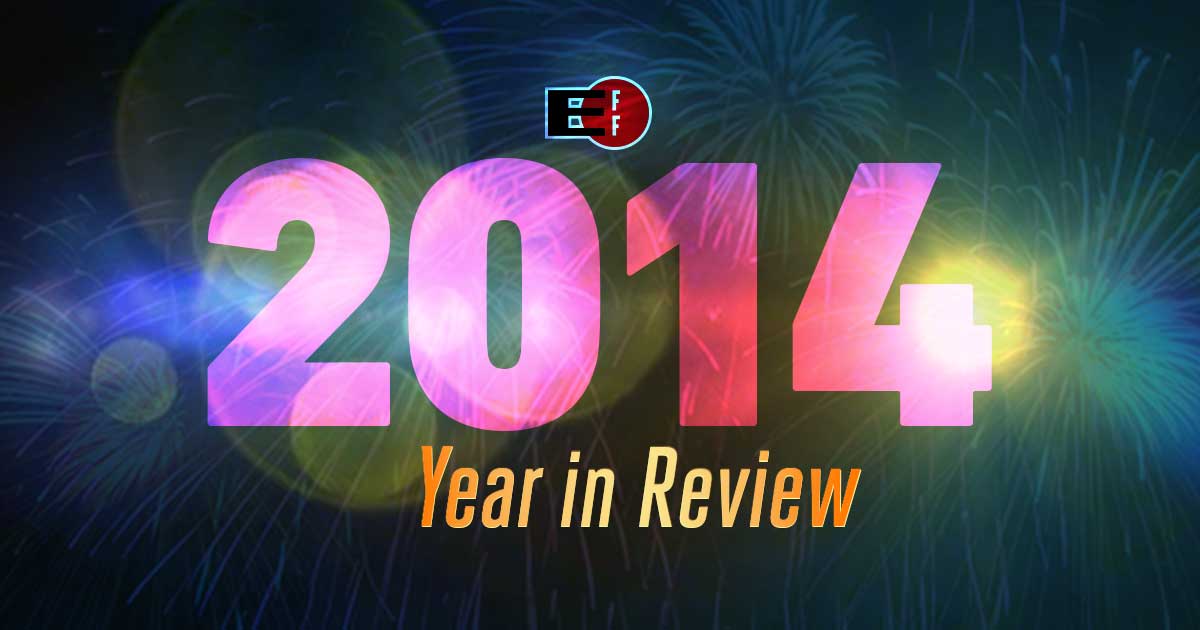 Back in January, Congress held a hearing on the state of fair use, as part of a year-long review of all things copyright that, in 2015, may lead to real legislative proposals. Among the witnesses was Professor Peter Jaszi, who had good news for the Committee: “[F]air use is working!” Meaning that, on balance, the fair use doctrine is doing its job: helping to ensure that copyright promotes, rather than impedes, creativity and innovation.
Back in January, Congress held a hearing on the state of fair use, as part of a year-long review of all things copyright that, in 2015, may lead to real legislative proposals. Among the witnesses was Professor Peter Jaszi, who had good news for the Committee: “[F]air use is working!” Meaning that, on balance, the fair use doctrine is doing its job: helping to ensure that copyright promotes, rather than impedes, creativity and innovation.
Several legal decisions this year suggest he is right. In June, for example, the Second Circuit Court of Appeals held that fair use sheltered book digitization, in Authors’ Guild v. Hathitrust. HathiTrust was set up by several universities to operate a digital library containing electronic scans of the universities’ books (Google provided the scans as part of its Google Books project). Most notably, the court found that the purpose of a full-text searchable database is so different from that of the underlying works that the use was “a quintessentially transformative use,” a conclusion that was key to its fair use finding.
In September, a federal court relied on that decision to reject Fox’s effort to use copyright to shut down a video “clipping” service, TVEyes. TVeyes creates a searchable database of TV and radio station broadcasts. The database enables research, commentary, and criticism that would otherwise be impossible for many of its users. Fox insisted that customers might abuse TVeyes to view Fox News without authorization, in ten minute increments.
The court largely dismissed Fox’s theories and held that TVEyes’ copying and making available of all of Fox News’ broadcast content was integral to its purpose of creating a complete and useful database.
On the other hand, many were perplexed by the outcome of another leading fair use case, Cambridge v. Patton. That case involved the creation of electronic reserves at Georgia State University (GSU), specifically the practice of sharing digitized book and article excerpts on a secure course website. A federal district court had found that most of the uses were fair, based on a somewhat mechanical analysis. On appeal, the Eleventh Circuit Court of Appeals stressed the importance of educational uses and reaffirmed the fundamental role of fair use in our copyright scheme in protecting such uses, noting that "[t]he fair use doctrine . . . critically limits the scope of the monopoly granted to authors under the Copyright Act in order to promote the public benefit copyright is intended to achieve." But it went on to hold nonetheless that the e-reserve uses were not “transformative” and therefore, the district court should have given the potential effect of GSU’s practice on the publishers’ market more weight.
For 2015, all eyes are on another mass digitization case, Authors Guild v. Google. The case is a companion to Hathitrust (and indeed predates it by several years) but, for complicated procedural reasons, has stayed on its own track. One of the judges in the case, Pierre Leval, has been hugely influential in shaping the fair use doctrine. We hope the judges will issue a decision in favor of fair use and help support fair use’s continuing role as a safety valve for innovation and creativity.
This article is part of our Year In Review series; read other articles about the fight for digital rights in 2014. Like what you're reading? EFF is a member-supported nonprofit, powered by donations from individuals around the world. Join us today and defend free speech, privacy, and innovation.








